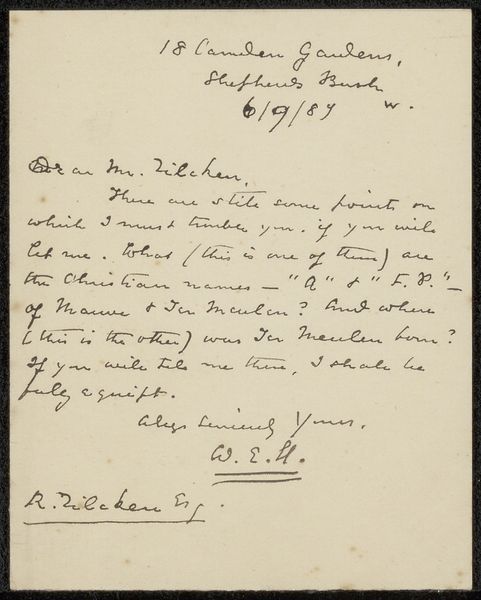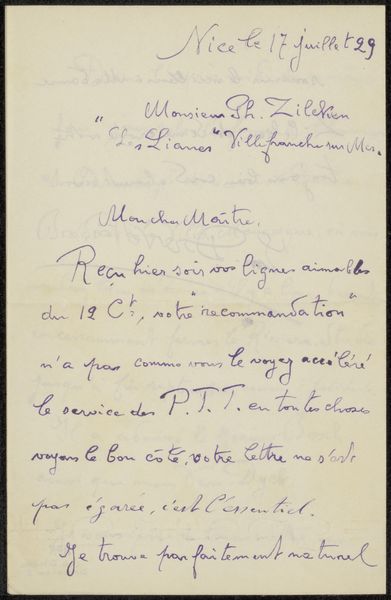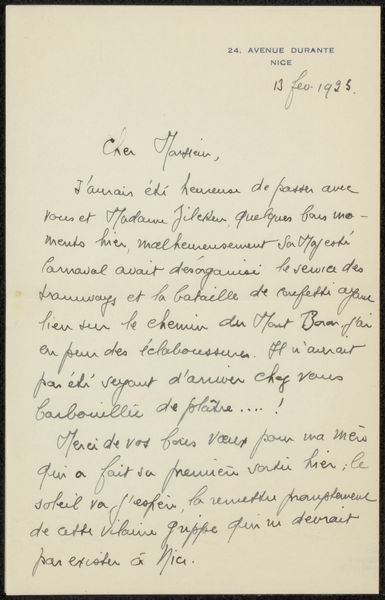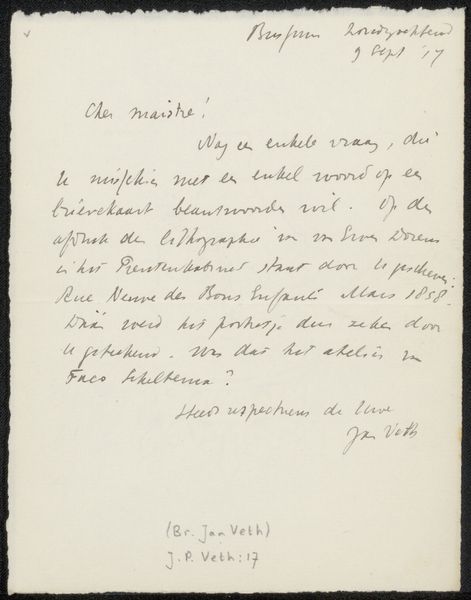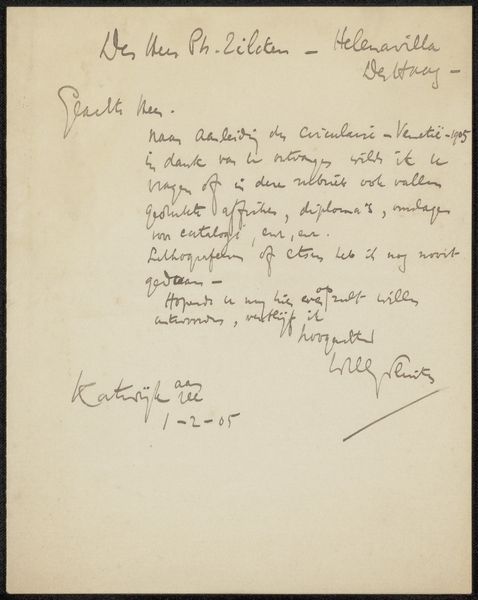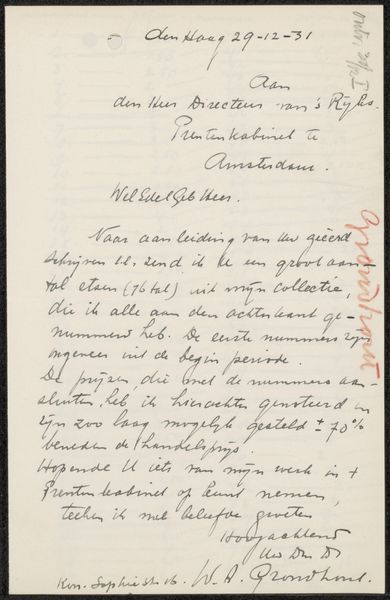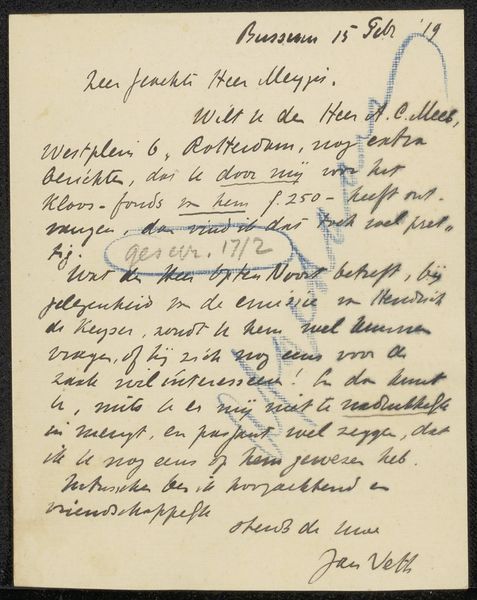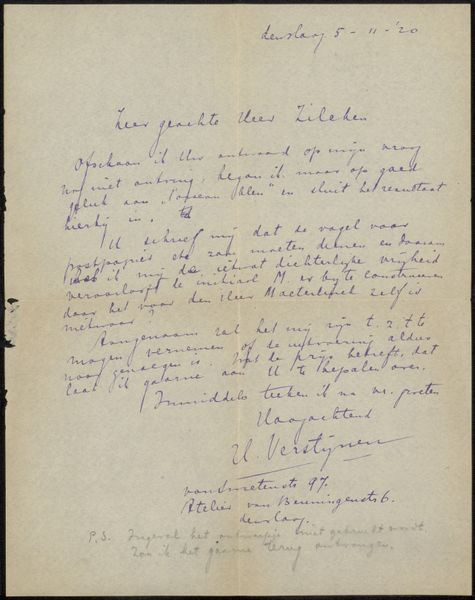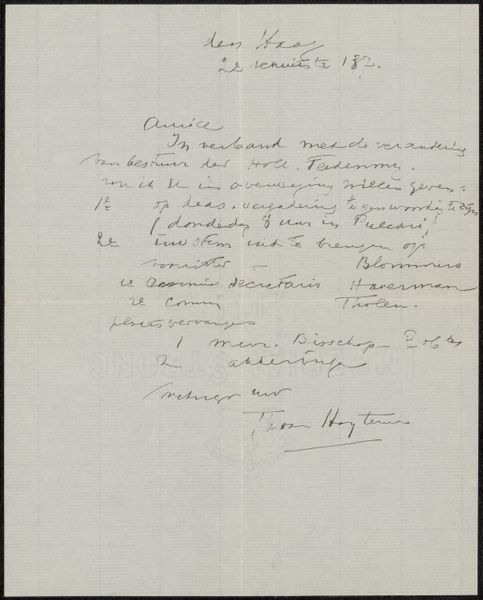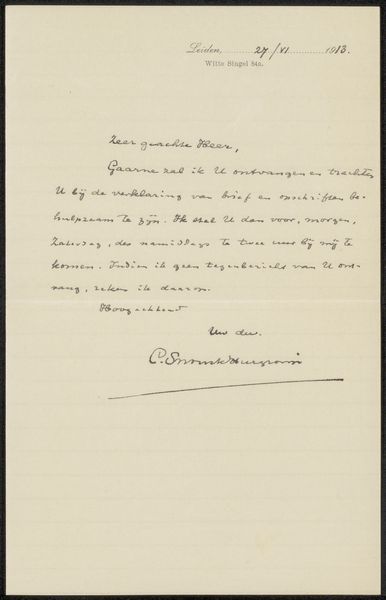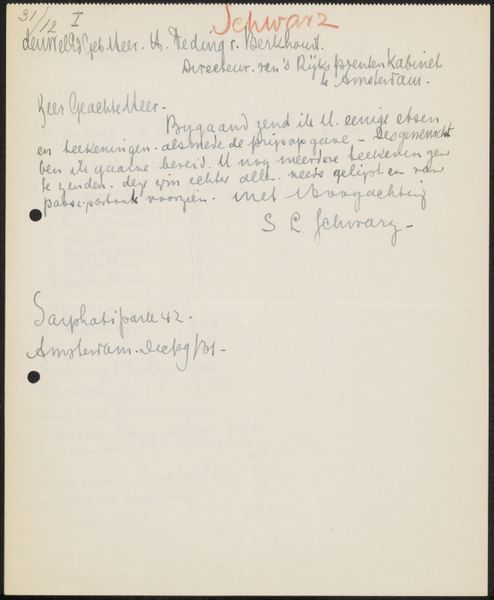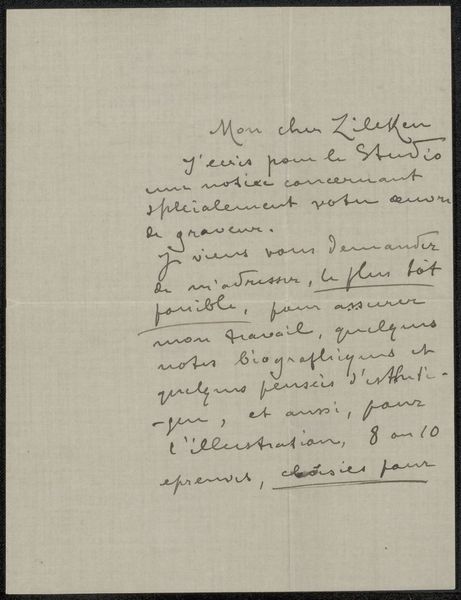
drawing, paper, ink, pen
#
drawing
#
paper
#
ink
#
ink drawing experimentation
#
pen-ink sketch
#
pen
Copyright: Rijks Museum: Open Domain
Curator: This piece here, “Brief aan Philip Zilcken,” possibly from 1893 by Richard Nicolaüs Roland Holst, employs pen and ink on paper. My initial impression is one of immediate intimacy, almost like eavesdropping. Editor: Indeed. The visible texture of the paper and the varying pressure of the pen strokes grant a textural richness, elevating it beyond mere document. What strikes you about the content itself? Curator: Beyond the handwritten note at the top addressed to Zilcken, the listed artworks hint at a larger cultural exchange. He details lithographs, mentioning Maurice Maeterlinck’s "Pelléas et Mélisande," signaling an interest in symbolist drama. The piece resonates with that turn-of-the-century interest in exploring the psyche. Editor: And the layout isn’t haphazard either; observe how Holst organizes the textual elements, establishing clear hierarchies and a directional flow that leads the eye. It is almost as if the text takes on the characteristic of drawing and not just a note. What about the artistic listing at the bottom? Do you feel Holst is just cataloging for commercial transaction? Curator: Partly transactional perhaps, but with an undercurrent of creative purpose. Take for instance, "Desolata;" such works often grappled with the concept of isolation. Holst seemingly intertwines his personal correspondence with cultural and existential currents. The choice of subject, materials, and language all converge. It makes this everyday action sacred. Editor: Your analysis adds another layer to the surface aesthetic! Before this conversation, I did not expect the brief correspondence to expand into questions of collective conscious, trauma, and purpose. I now find the letter as not a casual exchange, but as the artist asserting place.
Comments
No comments
Be the first to comment and join the conversation on the ultimate creative platform.

